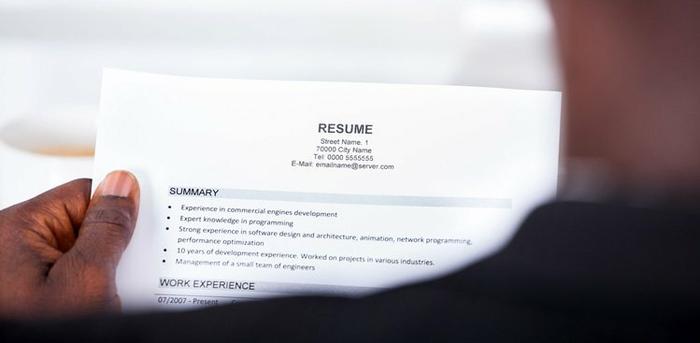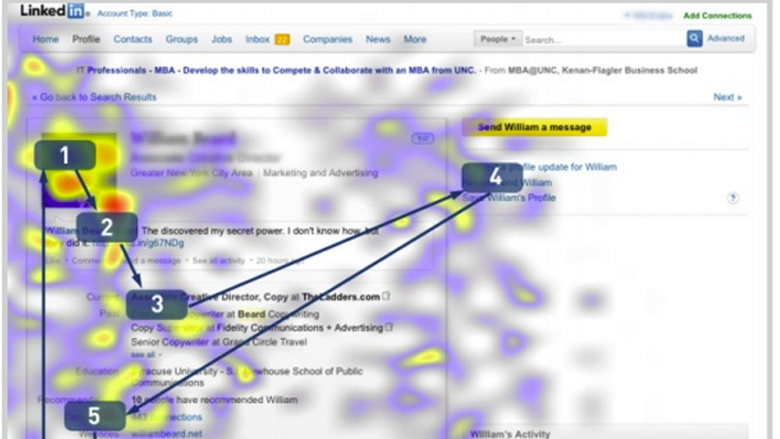
When you’re writing your resume or working on your LinkedIn profile, we bet you’ve wished you could get into hiring managers’ heads. What are they really looking for? How can you make your resume catch their eyes?
Thankfully, TheLadders got into their heads for us.
In a recent study of on-the-job behavior, TheLadders used eye-tracking technology to see where recruiters are spending their time when they’re looking at your resume or LinkedIn profile.
The study confirmed a couple things we’ve heard before—like the fact that recruiters really do only spend about six seconds looking at your profile—but it also discovered some new things about how to make your resumes (both on and offline) more likely to catch a recruiter’s attention in the right way. For example:
1. A Picture Says a Thousand Words
Heat maps of recruiters looking at LinkedIn profiles showed that they spent an average of 19% of their time looking at the profile picture. Yep, that little piece of real estate really matters! So, make sure yours is telling the right story—one of you being professional, likable, and great at what you do—by putting extra care into the photo you choose (no selfies here, please!). Try this awesome new tool to learn exactly what message your photo is sending.
2. Facts, Not Fluff
The heat maps also showed that recruiters spend almost 80% of their resume review time looking at your name, your current title and company, your previous title and company, your start and end dates, and your education. The rest was just scanned for relevant keywords.
What can you take from this? Well, while we wouldn’t advocate not putting any descriptive text at all, make sure to keep your summary and experience descriptions short, sweet, and easy to read (i.e., bullets are great, mega blocks of text are not).
3. Don’t Get (Too) Creative
Finally, the study found that recruiters found professionally rewritten resumes more “usable,” saying their organization and visual hierarchy were easier to follow. We don’t think you actually have to shell out for the professional services if you don’t want to, but make sure to format your resume in a relatively standard way, making it easier for recruiters to find exactly what they’re looking for as quickly as possible. (Try one of our basic resume templates if you’re not sure where to start.)
Want more? Check out the full report at TheLadders.
